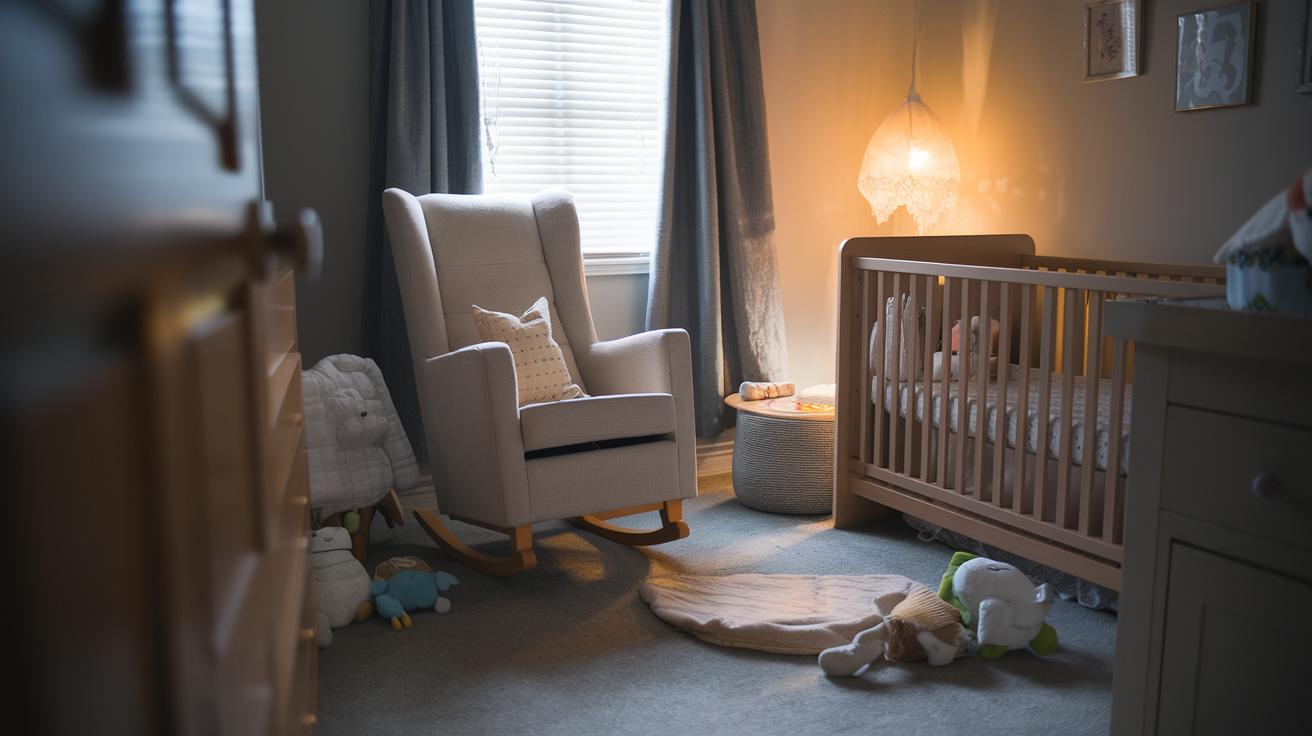Imagine the relief of a peaceful, uninterrupted night of sleep—for both you and your baby. As many parents can attest, the quest for that serene night might seem challenging, but understanding and working with your baby's natural sleep patterns could be the key. Babies experience dynamic sleep cycles as they grow, necessitating tailored strategies to foster their restful slumber. This article delves into the intriguing world of baby sleep patterns, effective routine-setting, and reliable sleep training methods, equipping you with evidence-based techniques to guide your baby toward sleeping peacefully through the night.
Understanding Baby Sleep Patterns
Newborn sleep cycles are characterized by frequent waking, often every two to three hours, as babies have shorter sleep cycles than adults. This frequent waking is primarily due to their developmental needs, including feeding and diaper changes. As infants grow, their sleep cycles gradually lengthen, and they begin to consolidate sleep. By three to four months, many infants can sleep for longer stretches, typically five hours, increasing to nine or ten hours as they reach five months. Parents may notice that infants start to establish a more predictable sleep schedule, falling asleep between 10 to 11 PM. This shift in sleep patterns is indicative of the developing circadian rhythm that aligns with environmental cues such as light and dark.
Age-appropriate sleep hours are crucial to understanding what is normal for a growing baby. In the first three months, infants need approximately 14 to 17 hours of sleep daily, which gradually reduces to 12 to 14 hours after four months. This decrease in required sleep reflects the baby's growing ability to stay awake for longer periods during the day as their brains and bodies develop. Parents can expect that as their baby matures, nighttime sleep will become more prolonged and daytime naps will decrease in frequency and duration. Understanding these typical sleep patterns can help parents manage expectations and create a conducive sleep environment that supports their baby's needs.
| Age | Recommended Sleep Hours |
|—————-|————————-|
| 0-3 months | 14-17 hours |
| 4-6 months | 12-15 hours |
| 7-12 months | 12-14 hours |
Creating a Calming Bedtime Routine

Establishing a consistent bedtime routine is essential for helping babies transition smoothly into sleep. A regular routine signals to the baby that bedtime is approaching, aiding in the development of their internal clock. Initiating the wind-down process approximately 30 minutes before sleep time can be highly effective. This period should involve dimming the lights and reducing noise levels, creating a tranquil environment conducive to sleep. By doing so, babies begin to associate these cues with sleep, helping them to settle down more easily. Ensuring that the room remains dark further reinforces the association between nighttime and sleep, minimizing potential distractions.
- Bathing to relax and soothe
- Gentle rocking or swaying
- Reading a short, calming story
- Soft singing or lullabies
- Quiet time with dimmed lights
These calming activities are instrumental in easing the transition from wakefulness to sleep. Regular bedtime routines provide predictability, which is crucial for infants as they learn to navigate their sleep patterns. Over time, babies come to expect these soothing activities and begin to relax as they anticipate sleep. This consistency not only helps the baby to fall asleep faster but also fosters a sense of security and comfort. By incorporating these soothing bedtime activities, parents can effectively support their baby's sleep habits, promoting a peaceful and restful night.
Effective Sleep Training Methods for Babies
Sleep training involves teaching infants to sleep independently, a process that can typically begin between four to six weeks of age. During this period, infants are neurologically developing the capacity to sleep for longer intervals by six to eight weeks. The aim of sleep training is to enable babies to sleep through the night, minimizing the need for parental intervention. Parents often face challenges in choosing the most suitable sleep training method, as it must align with both the baby's needs and family dynamics. A consistent approach, tailored to the infant's developmental stage, is essential for achieving long-term success in sleep training.
-
Ferber Method: Involves controlled crying intervals, allowing the baby to self-soothe while gradually increasing the duration before parental intervention.
-
Chair Method: Parents gradually move a chair farther from the crib each night, providing reassurance while promoting independent sleep.
-
Pick Up/Put Down Method: Parents pick up the baby when they cry and put them down once calm, reinforcing self-soothing.
- No Tears Method: Focuses on minimizing crying through gentle interventions like soothing sounds or gentle patting.
Consistency is crucial in sleep training as it establishes predictable patterns that infants can understand and adapt to. By maintaining regular bedtime routines and sticking to chosen methods, parents foster a sense of security and familiarity for their baby. This predictability helps infants adapt to their sleep environment, reducing anxiety and enhancing their ability to sleep through the night. Parents are encouraged to remain patient and persistent, as successful sleep training often requires time and adjustment before achieving desired results.
Overcoming Common Sleep Challenges

Sleep regressions are periods when a baby's sleep patterns temporarily worsen, often occurring around significant developmental milestones. These regressions, typically observed at around four months, eight months, and again at 18 months, can disrupt established sleep routines and lead to increased night wakings and difficulty settling down. The root cause is usually the baby's rapid brain development, which can temporarily affect their ability to sleep peacefully. Parents can manage sleep regressions by maintaining a consistent bedtime routine and offering extra comfort during these phases, allowing babies to adjust to their evolving sleep needs.
Managing night wakings involves implementing effective self-soothing techniques that encourage babies to return to sleep independently. Placing the baby in their crib while drowsy but awake can help them recognize their surroundings upon waking. During mid-sleep arousals, gently patting or placing a hand on the baby's chest can provide reassurance without fostering dependency on parental intervention. Creating a sleep environment that promotes relaxation, such as using white noise to mask disturbances, can also be beneficial. Consistency in these approaches helps reinforce the baby's ability to self-soothe and reduce nighttime disruptions.
Teething is another common challenge that can interfere with a baby's sleep. The discomfort from emerging teeth often leads to increased irritability and night wakings. To alleviate teething discomfort, parents can provide a cold teething ring or a gentle gum massage before bedtime. Ensuring the baby is well-fed and comfortable before sleep can also minimize the impact of teething on nighttime rest. Parental patience and understanding during this period are crucial in helping babies manage the discomfort associated with teething.
Recognizing and responding to sleep cues is essential for supporting a baby's sleep. Sleepiness cues, such as rubbing eyes, yawning, or fussiness, indicate that the baby is ready for sleep. Observing these cues, especially in the first three months, is vital because babies lack a set sleep schedule during this time. By around five months, babies can often fall asleep on their own, so practicing putting them down awake during the first nap of the day can encourage self-soothing. Responding appropriately to sleep cues helps establish a predictable sleep routine, fostering better sleep habits over time.
Safe Sleep Practices for Babies
Creating a safe sleep environment is paramount for the well-being of infants. Room-sharing, where the baby sleeps in the same room as the parents but on a separate sleep surface, is recommended for the first six months to reduce the risk of Sudden Infant Death Syndrome (SIDS). The American Academy of Pediatrics advises against co-sleeping due to potential safety hazards such as suffocation or entrapment. As infants become more aware of their surroundings by two to three months, maintaining a separate but nearby sleep space helps ensure safety while offering parents peace of mind.
Swaddling is a beneficial practice for newborns, designed to mimic the snug and secure environment of the womb. This technique can help soothe babies and reduce the startle reflex that often disrupts sleep. To swaddle safely, use a thin blanket, ensuring the baby's hips are free to move to prevent hip dysplasia. The swaddle should be snug around the arms but loose around the hips, allowing for natural movement. Parents should cease swaddling once the baby shows signs of rolling over to prevent potential suffocation.
- Use a firm and flat sleep surface, such as a crib mattress with a fitted sheet.
- Keep the crib free of pillows, blankets, and toys to reduce suffocation risks.
- Maintain a comfortable room temperature to prevent overheating.
- Avoid using sleep positioners or wedges, which are not recommended by safety regulators.
By adhering to these precautions, parents can establish a safe and conducive sleeping environment for their baby. Avoiding sleep crutches such as rocking or feeding to sleep is also critical, as these can lead to dependency, making it harder for the infant to self-soothe. Implementing these safe sleep practices fosters a secure atmosphere that supports healthy sleep patterns in infants.
Final Words
Understanding baby sleep patterns is crucial in tailoring effective and gentle sleep solutions. Infants initially experience frequent waking, which gradually improves as they grow. Effective bedtime routines play a key role by establishing a calming atmosphere conducive to longer sleep stretches.
Employing proven sleep training methods tailored to the family's needs can enhance how to get a baby to sleep. Sustaining consistency, while addressing common sleep disruptions, ensures parents are equipped to tackle the challenges of infant sleep.
Appropriate safe sleeping practices, such as swaddling and avoiding sleep crutches, can foster a secure environment, ultimately promoting healthier sleep habits for both parents and their growing babies.
FAQ
How to get a baby to sleep fast?
A calming bedtime routine, such as dimming lights and reducing noise, can help a baby fall asleep faster. Engaging in relaxing activities like rocking or reading also promotes easier sleep initiation.
How to put a baby to sleep in 40 seconds?
For rapid sleep induction, hold your baby securely and gently sway or rock them. Create a dark, quiet environment and offer a pacifier if it's part of their routine.
How to get a baby to sleep at night?
Establishing a consistent bedtime routine and ensuring your baby gets adequate daytime naps helps babies sleep better at night. Incorporate soothing activities to signal sleep time.
How to get a newborn to sleep without being held?
Encourage self-soothing by placing your newborn down when drowsy but still awake. Use swaddling and a gentle pat to create a comforting, secure environment, mimicking being held.
How to get a baby to sleep when they are fighting it?
Recognize sleep cues like yawning or fussiness and start bedtime routines before your baby becomes overtired. Maintain a consistent sleep schedule and environment to reduce resistance.
Why is my baby not sleeping deeply?
Interrupted deep sleep may result from hunger or discomfort. Ensure your baby is well-fed, dry, and comfortable. Evaluate environmental factors for optimal temperature and darkness.
How to get a fussy newborn to sleep at night?
A soothing routine such as a warm bath, gentle music, and minimized stimulation can help a fussy newborn settle. Use swaddling and calming techniques like patting for additional comfort.
How to get a baby to sleep through the night without feeding?
Gradually reduce night feedings by offering less milk, waiting longer between feeds, and ensuring adequate daytime nutrition. Consistent nighttime routines and self-soothing skills are beneficial.
How can you make a baby fall asleep fast?
Utilizing swaddling, gentle rocking, and white noise helps a baby fall asleep quickly. Ensure the room is dark and the environment is calm, signaling sleep time.
How do you deal with a baby that won't sleep?
Identify potential reasons, like discomfort or irregular routines. Implement consistent bedtime rituals, ensure comfortable sleep conditions, and practice patience to guide your baby into better sleep habits.
How can I induce my baby to sleep?
Introduce a calming bedtime routine, assess sleep readiness cues, and decrease environmental noise and light to induce your baby to sleep more effectively.
What is the 3-3-3 rule for baby sleep?
The 3-3-3 rule is a guideline based on three predictable nap times, three naps per day, and three hours awake time in between for some older infants, enhancing sleep predictability.


